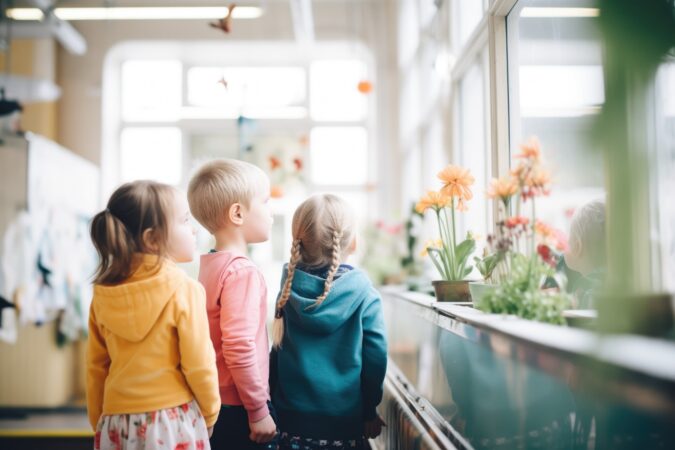Biodiversity, the variety of life on Earth, is fundamental to the health and stability of our planet. It underpins ecosystem services that are critical to human survival, including clean water, fertile soil, and climate regulation. Stephen Wentzel understands that biodiversity is now under severe threat from human activities such as deforestation, pollution, and climate change. In response, education and public awareness campaigns have emerged as essential tools in fostering a culture of conservation and encouraging proactive behaviors to protect biodiversity.
The Importance of Biodiversity
Before delving into the role of education and awareness, it is crucial to understand why biodiversity matters. Biodiversity provides a wealth of benefits to humans and the environment. It contributes to ecosystem productivity, where each species, no matter how small, plays an important role in maintaining ecological balance. Biodiversity also supports ecosystem services like pollination of plants, decomposition of waste, and regulation of the climate. Additionally, it is a source of genetic resources that are vital for food security, medicine, and biotechnology.
Biodiversity is also intrinsically valuable, contributing to the cultural and aesthetic richness of our world. It inspires art, literature, and recreation, adding to the quality of life and well-being of human societies. The loss of biodiversity, therefore, represents a significant loss of natural heritage and the diminishment of the natural world’s beauty and complexity.
Education as a Catalyst for Conservation
Education plays a pivotal role in biodiversity conservation by increasing our understanding and appreciation of the natural world. It equips individuals with the knowledge to recognize the importance of biodiversity and the threats it faces. Effective education programs integrate biodiversity into school curricula, emphasizing the interdependence of humans and nature.
Environmental education should start at a young age, fostering a connection to nature that can lead to lifelong conservation behaviors. Children exposed to biodiversity through outdoor activities, nature walks, and hands-on projects are more likely to develop a deep respect for the environment. This early exposure can instill values of stewardship and responsibility, motivating individuals to act in favor of conservation.
Higher education institutions also play a critical role. Universities and colleges can offer specialized courses and programs focused on biodiversity conservation, training the next generation of scientists, conservationists, and policymakers. Research conducted in these institutions contributes to our understanding of biodiversity and informs effective conservation strategies.
Public Awareness Campaigns: Mobilizing Action
While education provides the foundation, public awareness campaigns are vital for reaching a broader audience and mobilizing action. These campaigns aim to inform the public about the importance of biodiversity and the steps that can be taken to protect it. They utilize various media platforms, including social media, television, radio, and print, to disseminate information and engage the public.
Effective public awareness campaigns are characterized by clear messaging and a strong call to action. They often highlight the direct benefits of maintaining biodiversity conservation to human well-being, allowing individuals to thoroughly understand its importance and urgency. For example, campaigns might emphasize how protecting forests helps combat climate change or how conserving wetlands ensures clean water supplies.
Visual storytelling is a powerful tool in these campaigns. Images and videos showcasing the beauty and diversity of nature can evoke emotional responses and a sense of wonder, inspiring people to care more about conservation. Additionally, featuring local communities and their efforts to protect biodiversity can demonstrate practical steps that individuals and groups have already taken, showing how the cause is achievable.
Encouraging Proactive Behaviors
One of the main goals of education and awareness efforts is to encourage proactive behaviors that contribute to biodiversity conservation. This can be achieved through various strategies:
- Promoting Sustainable Practices: Education and awareness campaigns can promote sustainable practices such as reducing waste, conserving water, and using eco-friendly products. Encouraging consumers to make environmentally conscious choices can reduce pressure on natural resources and habitats.
- Citizen Science Programs: Involving the public in citizen science programs allows individuals to directly contribute to biodiversity monitoring and conservation efforts. These programs can include activities like bird watching, plant identification, and wildlife surveys. Citizen science not only provides valuable data for research but also fosters a sense of ownership and engagement with conservation efforts.
- Community Involvement: Local communities play a crucial role in biodiversity conservation. Education and awareness campaigns can empower communities to protect their local environments through initiatives like tree planting, habitat restoration, and sustainable agriculture. Supporting community-led conservation projects ensures that conservation efforts are culturally appropriate and locally relevant.
- Advocacy and Policy Influence: Educated and aware citizens are more likely to advocate for policies that protect biodiversity. Public pressure can influence governments and corporations to adopt more sustainable practices and implement conservation policies. Education campaigns can inform the public about their rights and the importance of advocating for environmental protection.
Challenges and Opportunities
Despite the importance of education and awareness in biodiversity conservation, there are challenges that must be addressed. These include reaching diverse audiences, overcoming misinformation, and ensuring that conservation messages resonate across different cultural contexts.
However, there are also significant opportunities to consider. Advances in technology and communication provide new platforms for spreading awareness. Social media, in particular, allows for rapid dissemination of information and can mobilize large groups of people. Collaborations between governments, non-governmental organizations, educational institutions, and the private sector can significantly amplify the impact of conservation education and awareness campaigns.
The role of education and awareness in biodiversity conservation cannot be overstated. By increasing knowledge, fostering appreciation, and encouraging proactive behaviors, these efforts can build a culture of conservation that is essential for the long-term protection of our planet’s biodiversity. As threats to biodiversity continue to grow, it is imperative that education and public awareness remain at the forefront of conservation strategies, empowering individuals and communities to take action for a more sustainable future.
